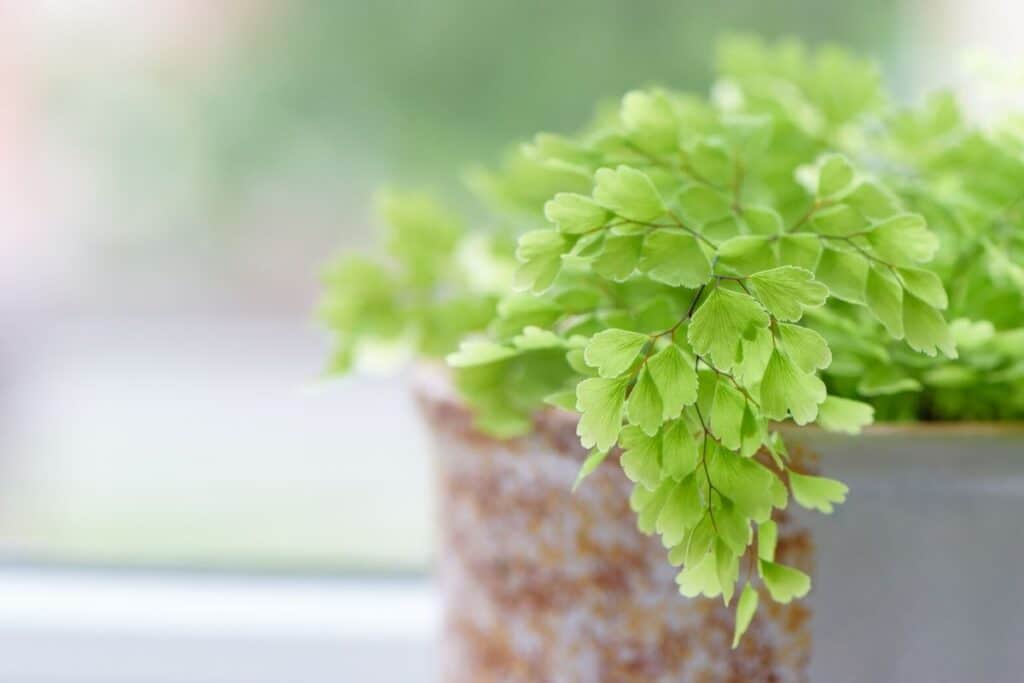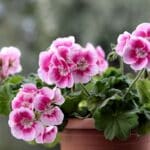Adiantum is the genus under the fern family commonly referred to as the Maidenhair fern. The scientific name was derived from the Greek word adiantos meaning “unwetted” owing to the fact that the leaves of the plant repel water (1).
There are over 200 Adiantum species, many of which have been cultivated for a variety of ornamental uses. Considered as rhizomes, Maidenhair ferns vary in appearance but they are generally characterized by the airy palm-shaped fronds made of triangular green leaflets irregularly branched along deep brown, almost black wiry stems.
There are many types of houseplants, but this unique and attractive foliage formation, together with the plant’s ideal growth habit is what makes the Maidenhair fern an excellent and effective houseplant.
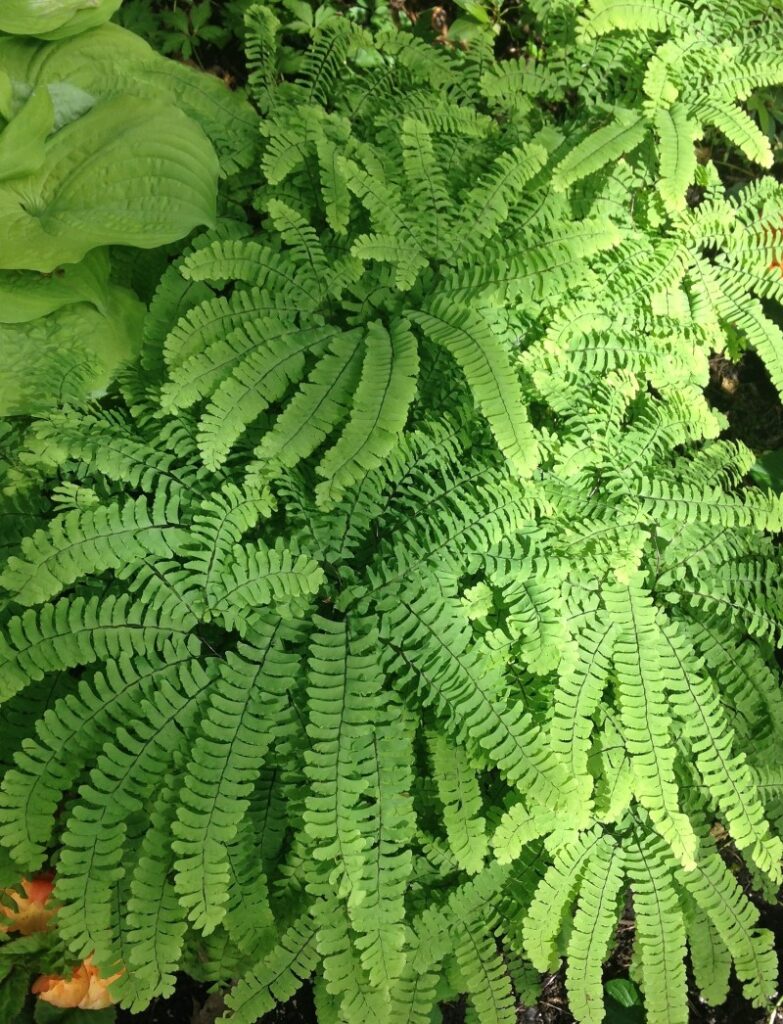
Plant Maidenhair Ferns Guide
Does the Maidenhair Fern Need Sun?
Full shade will cause the plant to decline, particularly when the soil is kept oversaturated while overexposure to direct sun will turn the edges or the whole leaf brown and brittle, especially if the plant is not receiving enough moisture (3).
Maidenhair ferns naturally require diffused sunlight. Although commercial plants are already acclimatized to endure longer exposure to sunlight, it is still best to place the fern in a dimly-lit room (4).
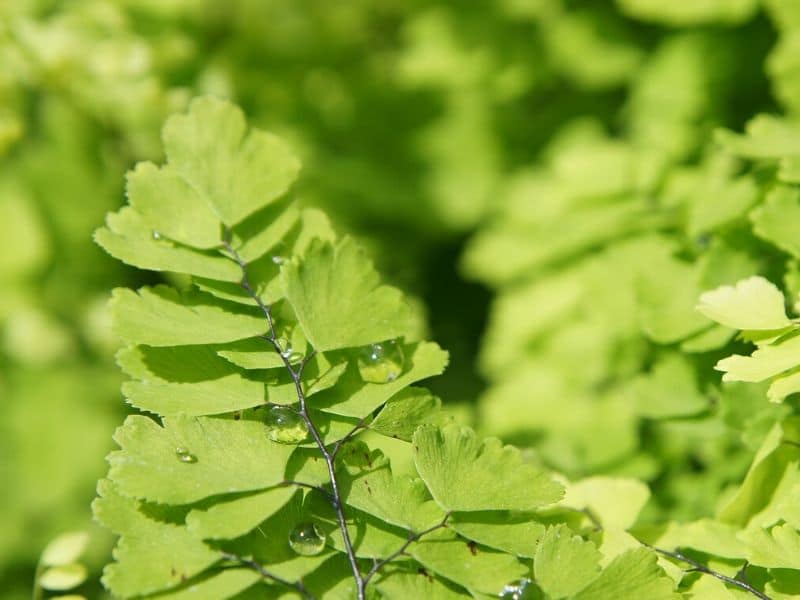
Regulating Temperature and Relative Humidity
Maidenhair ferns generally like cool conditions with indoor temperatures ranging from 16 to 21 degrees Celsius and high relative humidity.
In temperate regions, Maidenhair ferns can be kept in the living room during spring. However, come winter when the indoor heating is on, they must be placed in cooler areas.
The bathroom can be the most humid place in the house and therefore provides an ideal environment for these ferns (5).
When days get hot, providing the fern with a mist of rainwater or boiled water will help keep it cool. Another effective method to improve relative humidity is by placing the potted maidenhair fern on a tray filled with pebbles and water. The evaporating water provides the needed humidity around the plant (3).
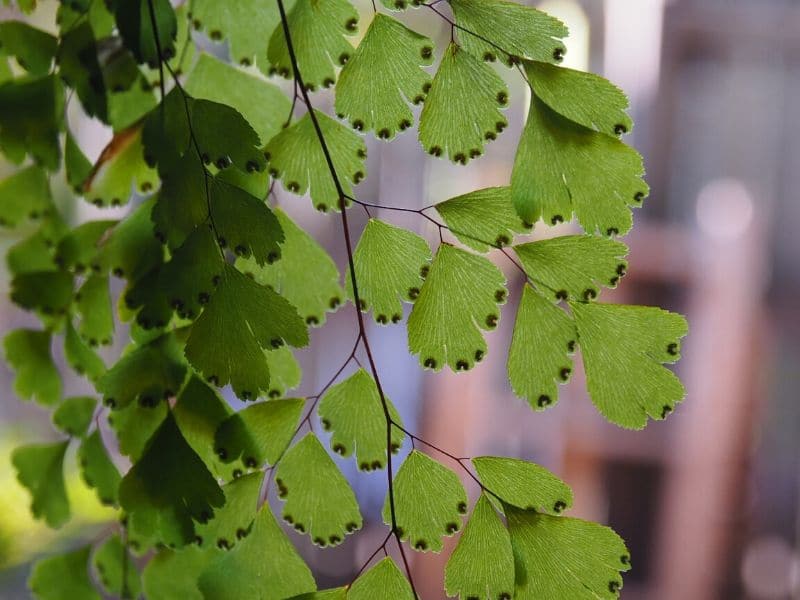
Water Requirement
The Adiantum fern is quite particular about its water needs. It should not permanently stand in water or the whole plant will start rotting and die.
Too little water, on the other hand, will make the plant wilt and dry (5). Water must be regularly applied but just enough to keep the soil moisture instead of waterlogged.
Sometimes modifying the growing medium aids in preventing overwatering. A good mixture of sand, potting soil, and wood chips or coco husk provides better aeration and drainage.
Watering can be tricky so another useful technique that can be done is double potting.
Do Maidenhair Ferns Need Fertilizer?
As long as the maidenhair ferns grow green and normal, fertilizer application can be skipped. When the fern starts showing signs like yellowing and stunted or slow growth, this may be the time to consider applying fertilizer (3).
Commercial fertilizers often have instruction on the labels as a guide in fertilizer application. It is important to follow the recommendations accordingly in order to avoid overfertilization. A strong dose may burn the leaves of the fern or eventually kill it (3).
What are the Common Pests of Adiantums?
Maidenhair ferns are not immune to destructive pests and diseases. Snails, slugs, and caterpillars occasionally feed on the rhizome and vegetative fronds outdoors (2). These attacks can be prevented by application of mulches or coarse materials around the fern and by spraying insecticidal soap on the leaves of the plants.
Ferns indoors are attacked by scale insects, mealy bugs, aphids, and fungus. Normally, the insect pests are manually removed by washing the infested parts (fronds or roots) under running water or by dabbing them off with a rubbing alcohol-dipped cotton swab. Fungus infection, often caused by overwatering, may be prevented by proper watering techniques and application of mild fungicides.
Propagate Maidenhair Fern
Instead of flowers, Adiantum ferns produce and spread primarily by spores which are round-shaped brown sori on the underside of each leaflet. Propagation by spores takes time–about 3 to 4 years before the spore turns into a mature, pot-ready plant.
A more convenient way of propagation is by division. Since these ferns are rhizomatic, they can also be propagated by root division, ideally during spring for higher survival rate (4). A potted plant is made of clumps of frond-bearing rhizomes which can be parted apart and repotted as long as the roots are intact.
Toxicity to Humans and Pets
Not only do Maidenhair ferns add beauty to an indoor setting but they also purify the air and are mainly safe and non-toxic to both humans and pets. There is no need to worry if a pet playfully or accidentally eats a part of the plant.
Top 3 Maidenhair Ferns You Can Grow as Houseplants
#1. Rough Maidenhair, A. hispidulum
This fern is characterized by the branching feather-like leaves which are reddish pink when they newly emerge. Often grown indoors in temperate regions reaching a moderate size of 30 cm tall. It likes bright, indirect sunlight and is tolerant of indoor humidity.
#2. Delta Maidenhair Fern, A. raddianum
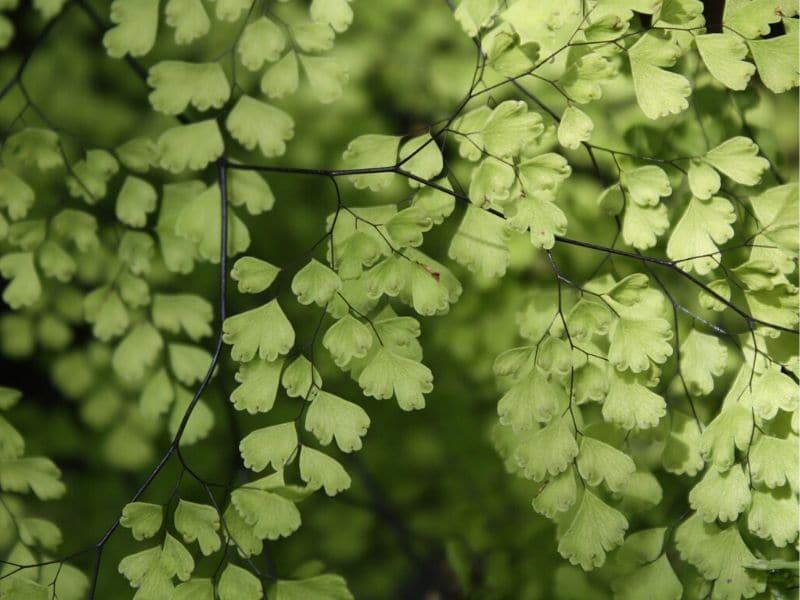
This drooping fern loves humidity that it is often grown in a terrarium or near water features in the shade gardens. It is the most common Maidenhair fern, serving as the mother plant of various cultivars now commercially available.
#3. Northern Maidenhair, A. pedatum
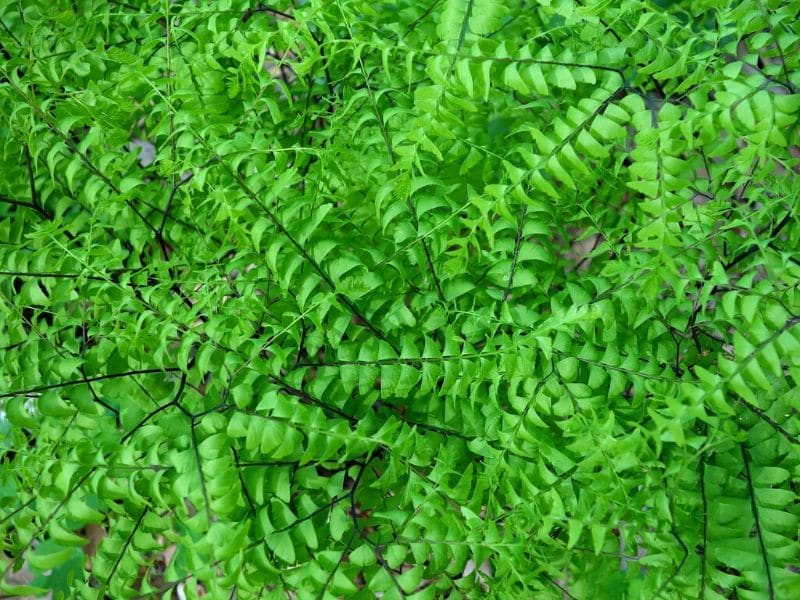
This fern is one of the most resilient Maidenhairs with little to none serious pest and disease problems. It is also known as “five-fingered fern” because of the way the feather-like fronds are radially arranged. This fern can reach up to half a meter tall and is often used to create borders in a shaded garden or as one of many edging plants for borders. Indoors, the attractive foliage and form serve as a focal point.
Other species worth considering are:
- Brittle Maidenhair, A. tenerum
- Southern Maidenhair Fern, A. capillus-veneris
- Venus Hair, A. fragrans
- Bridal Veil Maidenhair, A. fortei
FAQs
Are maidenhair ferns hard to keep alive?
Maidenhair ferns (Adiantum) can be somewhat challenging to keep alive, especially for beginners. They require specific care, including consistent moisture, high humidity, and indirect light.
Is maidenhair fern a good indoor plant?
While maidenhair ferns can be challenging, they are popular as indoor plants for their delicate, lacy foliage. Indoor environments may need to be adjusted to meet their humidity and light requirements.
Where is the best place to put a maidenhair fern?
Place maidenhair ferns in a location with indirect light, avoiding direct sunlight. They thrive in high humidity, so bathrooms or kitchens with adequate moisture can be suitable. Additionally, providing well-draining soil and avoiding drafts can contribute to their well-being.
References
Reference list:
(1) Quattrocchi, U. (2016). CRCWorld Dictionary of Medicinal and Poisonous Plants, p. 90. CRCPress
(2) CABI.org. (2019). Adiantum raddianum. [online] Available at: https://www.cabi.org/isc/datasheet/3237#tosummaryOfInvasiveness
(3) Weinstein, M. (2020). The Complete Book of Ferns: Indoors-Outdoors-Growing-Crafting-History & Lore. pp. 68-90. Cool Springs Press.
(4) Compton, J. (1972). House Plants: Knowledge through Color, p. 56. McGill-Queen’s Press.
(5) Vermeulen, N. (1999). Encyclopedia of House Plants, pp. 11-13. Taylor and Francis.
Close
*Photo by lusyaya/depositphotos

